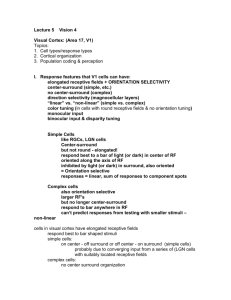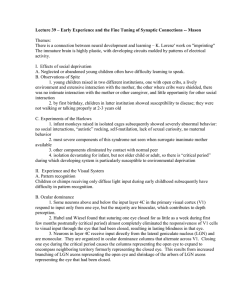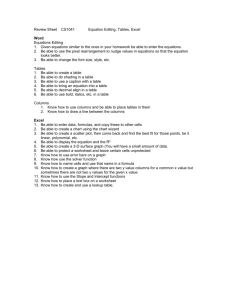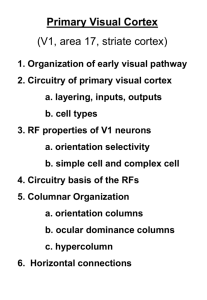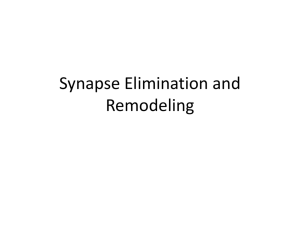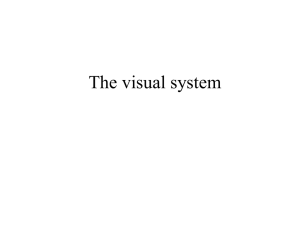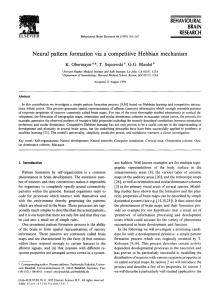The Urgent Need to Use Both Eyes
advertisement
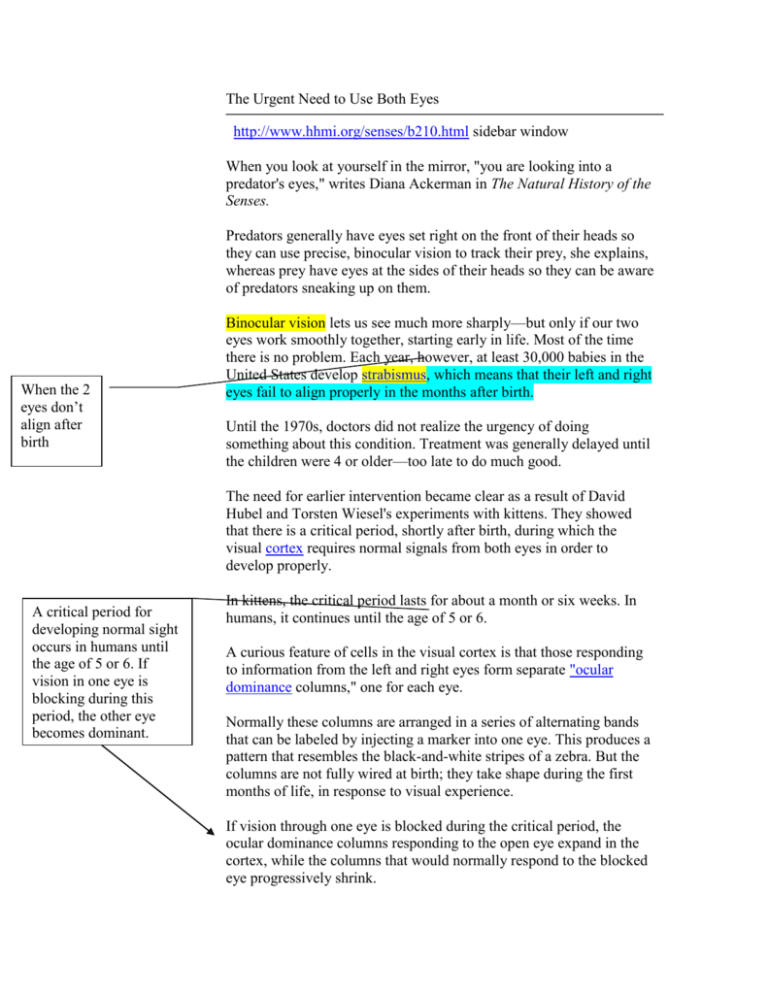
The Urgent Need to Use Both Eyes http://www.hhmi.org/senses/b210.html sidebar window When you look at yourself in the mirror, "you are looking into a predator's eyes," writes Diana Ackerman in The Natural History of the Senses. Predators generally have eyes set right on the front of their heads so they can use precise, binocular vision to track their prey, she explains, whereas prey have eyes at the sides of their heads so they can be aware of predators sneaking up on them. When the 2 eyes don’t align after birth Binocular vision lets us see much more sharply—but only if our two eyes work smoothly together, starting early in life. Most of the time there is no problem. Each year, however, at least 30,000 babies in the United States develop strabismus, which means that their left and right eyes fail to align properly in the months after birth. Until the 1970s, doctors did not realize the urgency of doing something about this condition. Treatment was generally delayed until the children were 4 or older—too late to do much good. The need for earlier intervention became clear as a result of David Hubel and Torsten Wiesel's experiments with kittens. They showed that there is a critical period, shortly after birth, during which the visual cortex requires normal signals from both eyes in order to develop properly. A critical period for developing normal sight occurs in humans until the age of 5 or 6. If vision in one eye is blocking during this period, the other eye becomes dominant. In kittens, the critical period lasts for about a month or six weeks. In humans, it continues until the age of 5 or 6. A curious feature of cells in the visual cortex is that those responding to information from the left and right eyes form separate "ocular dominance columns," one for each eye. Normally these columns are arranged in a series of alternating bands that can be labeled by injecting a marker into one eye. This produces a pattern that resembles the black-and-white stripes of a zebra. But the columns are not fully wired at birth; they take shape during the first months of life, in response to visual experience. If vision through one eye is blocked during the critical period, the ocular dominance columns responding to the open eye expand in the cortex, while the columns that would normally respond to the blocked eye progressively shrink. An adult who loses his vision because of a cataract (a clouding of the lens of the eye) will generally see normally again if the opaque lens is removed and replaced with a clear artificial lens. But a child whose cataract is not removed until the age of 7 will be blind in the eye that was blocked by the cataract, even though the cataract is gone and the retina of the eye is able to function normally. The same kind of amblyopia—a loss of vision without any apparent defect of the eye—occurs in children whose eyes are misaligned, aswell as in those whose eyes focus at different distances. Lazy eye refers to an eye that hasn’t developed as strongly as the other eye. The eye can become blind permanently if not used correctly during the critical development period. To avoid double vision, such children generally favor one eye and stop using the other. The brain then suppresses the signals coming from the unfavored or "lazy" eye. The neurons in the ocular dominance columns that should receive signals from this eye become wired incorrectly, and the child loses his ability to see with the neglected eye. After a few years, neither surgery nor exercises nor a patch over the favored eye can restore the lost vision. Armed with this information, ophthalmologists now treat infants who have visual defects as early as possible, with either spectacles or surgery, since normal vision can be restored if treatment begins before the age of 3 or 4. Anthony Movshon and other researchers have studied monkeys with artificially produced amblyopia. They found that the cells in these monkeys' retinas and lateral geniculate nuclei (LGN), the visual system's relay stations in the center of the brain, are normal. But in the case of the neglected eye, "the signals that go from the LGN to the primary visual cortex don't make it," Movshon says. The loss occurs because the connections between cells in the LGN and cells in the corresponding eye dominance columns fail to develop or be maintained. — Geoffrey Montgome
